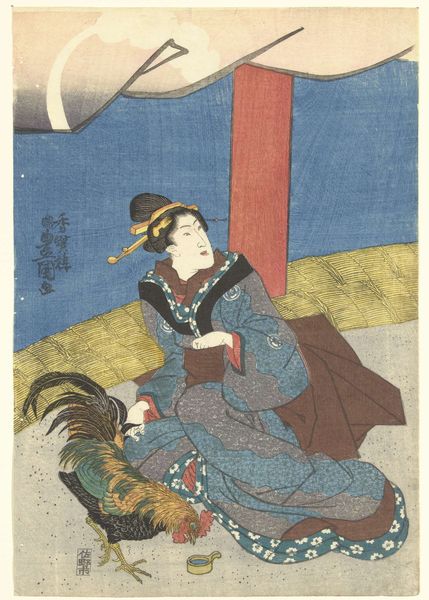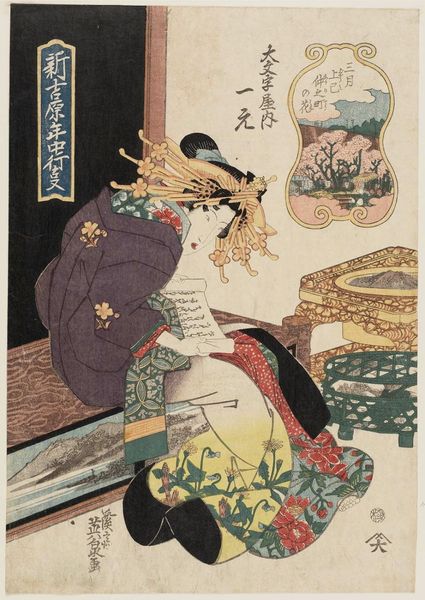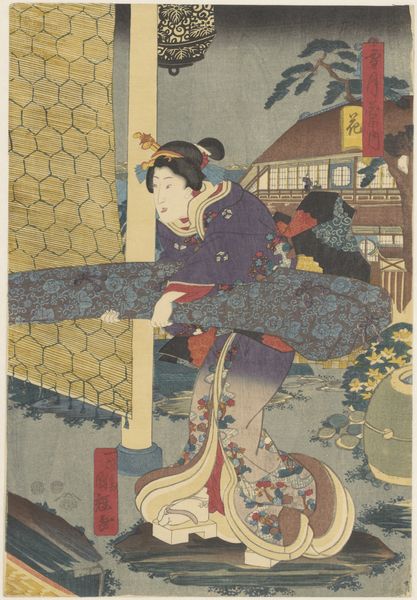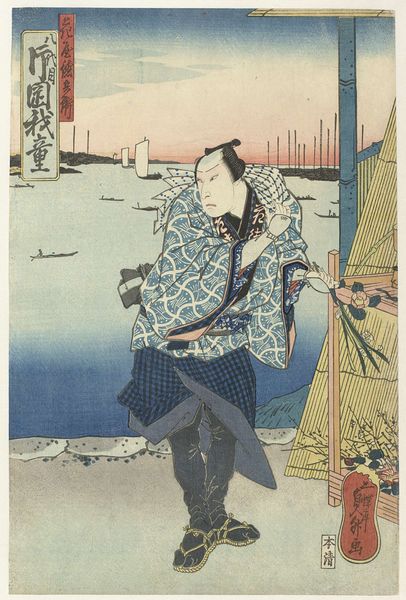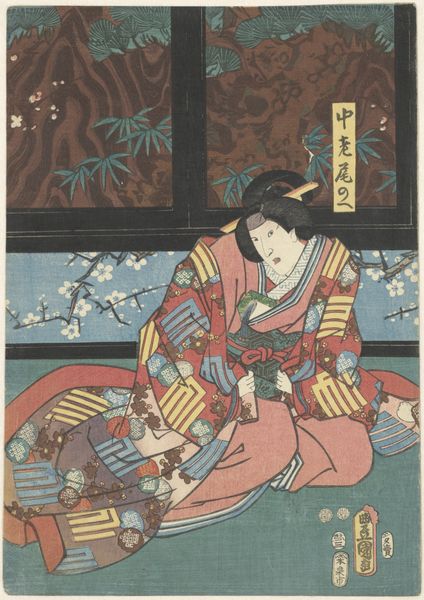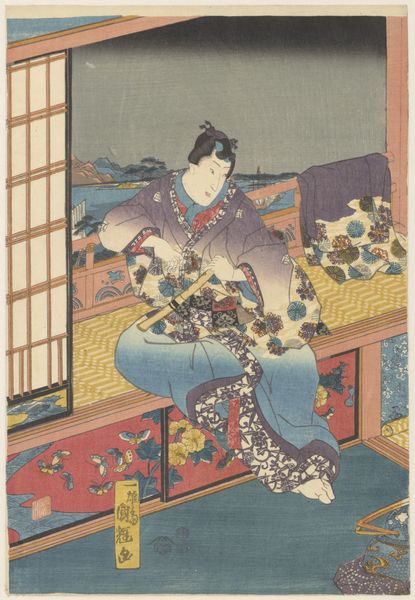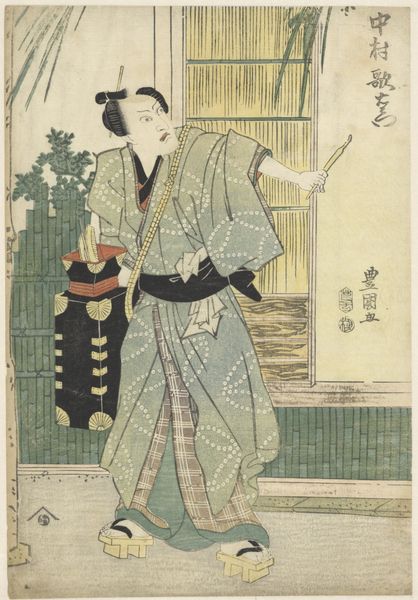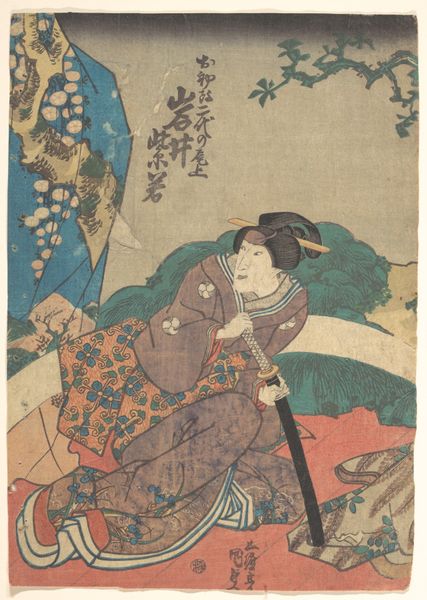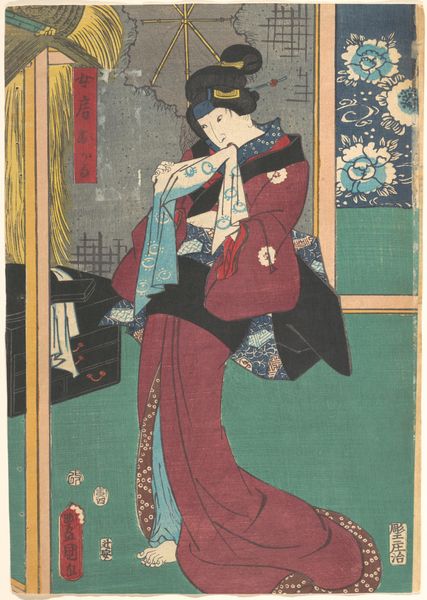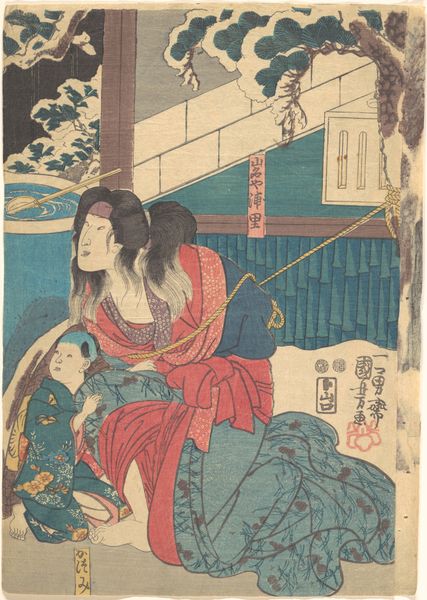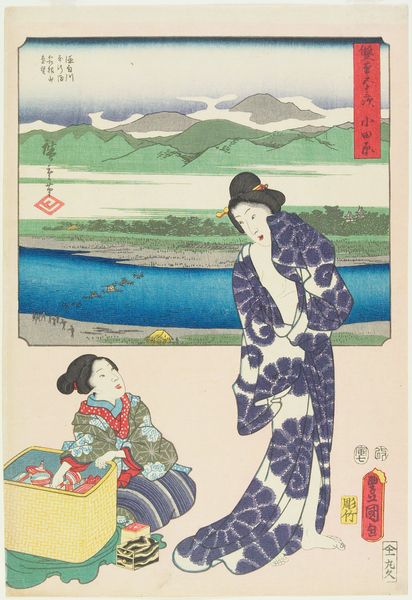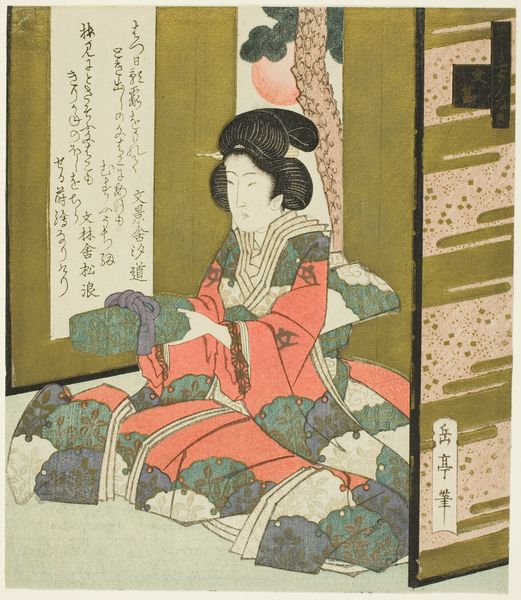
print, woodblock-print
#
portrait
# print
#
asian-art
#
bird
#
flower
#
ukiyo-e
#
figuration
#
woodblock-print
#
orientalism
Dimensions: Image: 13 5/8 × 9 5/8 in. (34.6 × 24.4 cm)
Copyright: Public Domain
Curator: Looking at this woodblock print, I immediately feel transported—it's an invitation to slow down. Editor: Precisely. What we see here is an artwork titled "Print," crafted sometime between 1800 and 1865 by Utagawa Kunisada, now residing at The Metropolitan Museum of Art. Its creation occurs within a pivotal moment for Ukiyo-e prints, at a point where its thematic content shifted to explore narratives surrounding class, gender, and commercialism. Curator: The woman’s posture suggests introspection, wouldn't you say? There’s a slight downturn to her gaze, maybe melancholy? Editor: The female figure embodies certain performative expectations in Japan’s Edo period, and Kunisada's body of work is steeped in themes of representation—this image in particular seems invested in the cultural significance attributed to women's representation at the time, even as the style romanticizes those representations. Note how that’s set off by the interior setting. The bird, the flowers. There's almost a tension between figure and the interior space they occupy. Curator: That phoenix on the screen really pops. It feels like an aspirational emblem hovering behind her, almost mocking her. Editor: I can see that interpretation. That bird can certainly represent many things: desire, transformation, maybe a touch of caged aspiration in its own right... particularly since the work blends both figuration with images we’d historically attribute to Japanese folklore. Considering this interplay offers insight into the political implications of the artwork in its own time, and what the themes might illuminate about our contemporary culture. Curator: Well, the bird’s really caught my imagination. And it’s set against the cherry blossoms, which traditionally stand for new beginnings. All this set in an image produced as the West’s influence in Japan expanded... so much complexity hidden beneath seemingly tranquil picture. Editor: I agree. Considering these works today invites important contemporary dialogues about Japan’s history and, by extension, our present reality.
Comments
No comments
Be the first to comment and join the conversation on the ultimate creative platform.

